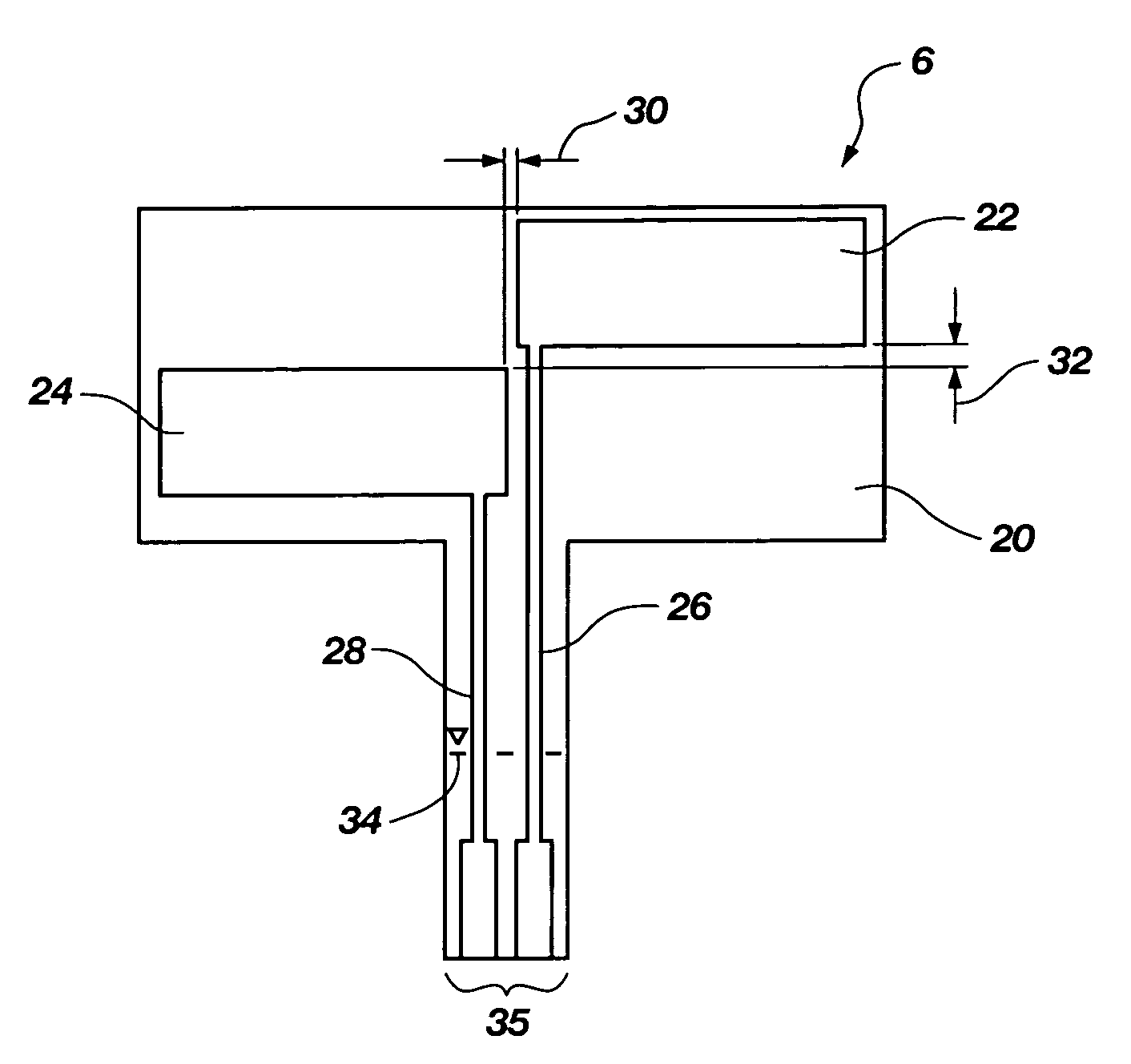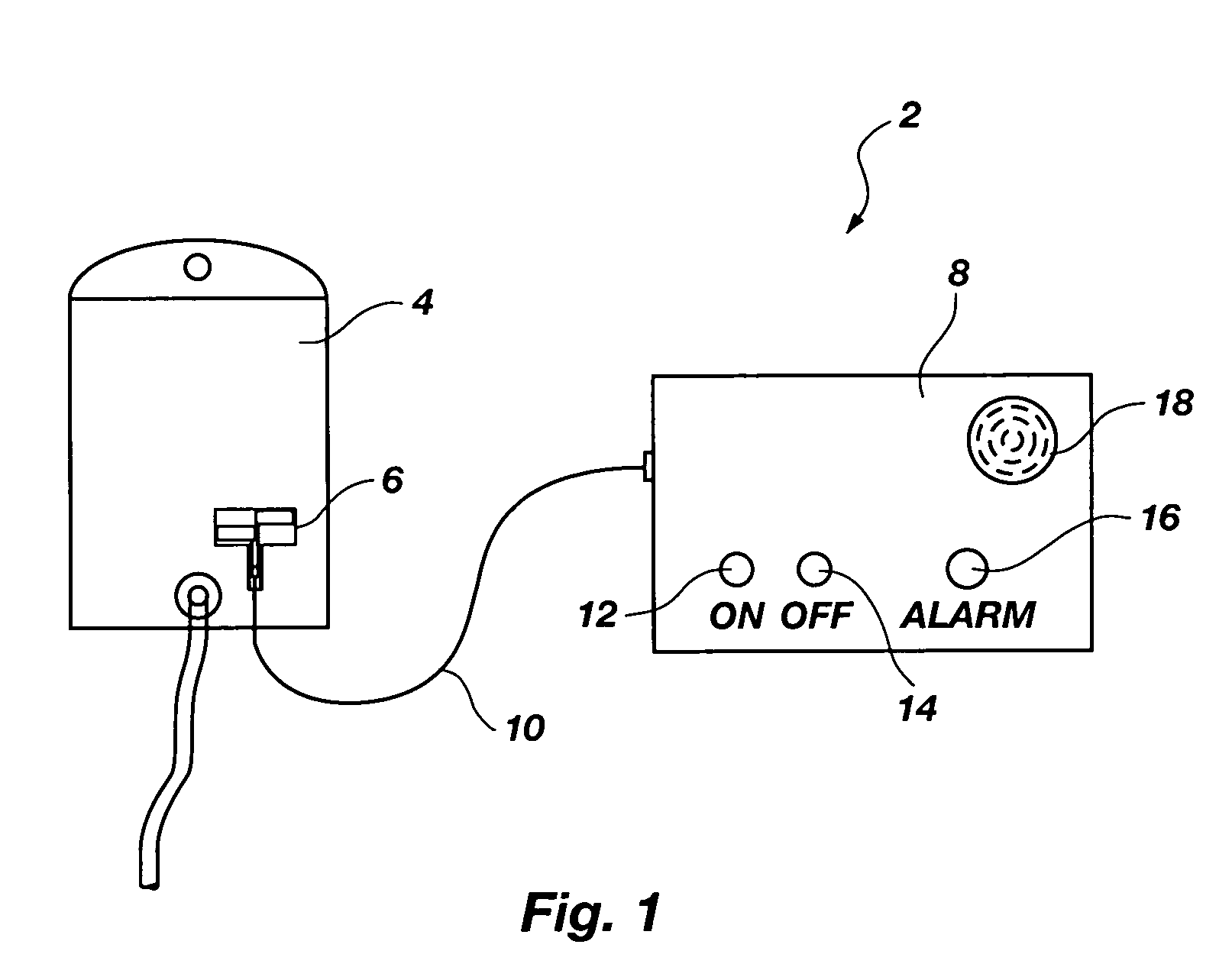Method and apparatus for detection of fluid level in a container
a technology of fluid level and container, applied in the direction of liquid/fluent solid measurement, instruments, machines/engines, etc., can solve the problems of unattended, difficult to estimate exactly, and difficult to determine when all the fluid within the container has been dispensed, so as to reduce the effect of capacitance and accurately detect rapid changing fluid levels
- Summary
- Abstract
- Description
- Claims
- Application Information
AI Technical Summary
Benefits of technology
Problems solved by technology
Method used
Image
Examples
Embodiment Construction
[0025]FIG. 1 depicts a fluid level sensor system 2 according to an embodiment of the present invention including a fluid container 4, a fluid level sensor 6, and detection and control circuitry housed in a control box 8. The fluid container 4 may be any fluid container having an electrically nonconductive wall such as both the rigid- and flexible-walled fluid containers commonly used in medical applications for storing blood, saline solution, human waste, or other fluids or mixtures. The fluid level sensor 6 may be affixed to a side of the fluid container 4 by an adhesive such as a pressure sensitive adhesive or other medical grade adhesive well known to one of ordinary skill in the art. The fluid level sensor 6 may be affixed to an outside wall of the fluid container 4 by medical personnel or other operator just before use, or formed on or within the fluid container wall as part of a manufacturing process and sold as an integral unit with the fluid container 4.
[0026]A conductive ca...
PUM
 Login to View More
Login to View More Abstract
Description
Claims
Application Information
 Login to View More
Login to View More - R&D
- Intellectual Property
- Life Sciences
- Materials
- Tech Scout
- Unparalleled Data Quality
- Higher Quality Content
- 60% Fewer Hallucinations
Browse by: Latest US Patents, China's latest patents, Technical Efficacy Thesaurus, Application Domain, Technology Topic, Popular Technical Reports.
© 2025 PatSnap. All rights reserved.Legal|Privacy policy|Modern Slavery Act Transparency Statement|Sitemap|About US| Contact US: help@patsnap.com



